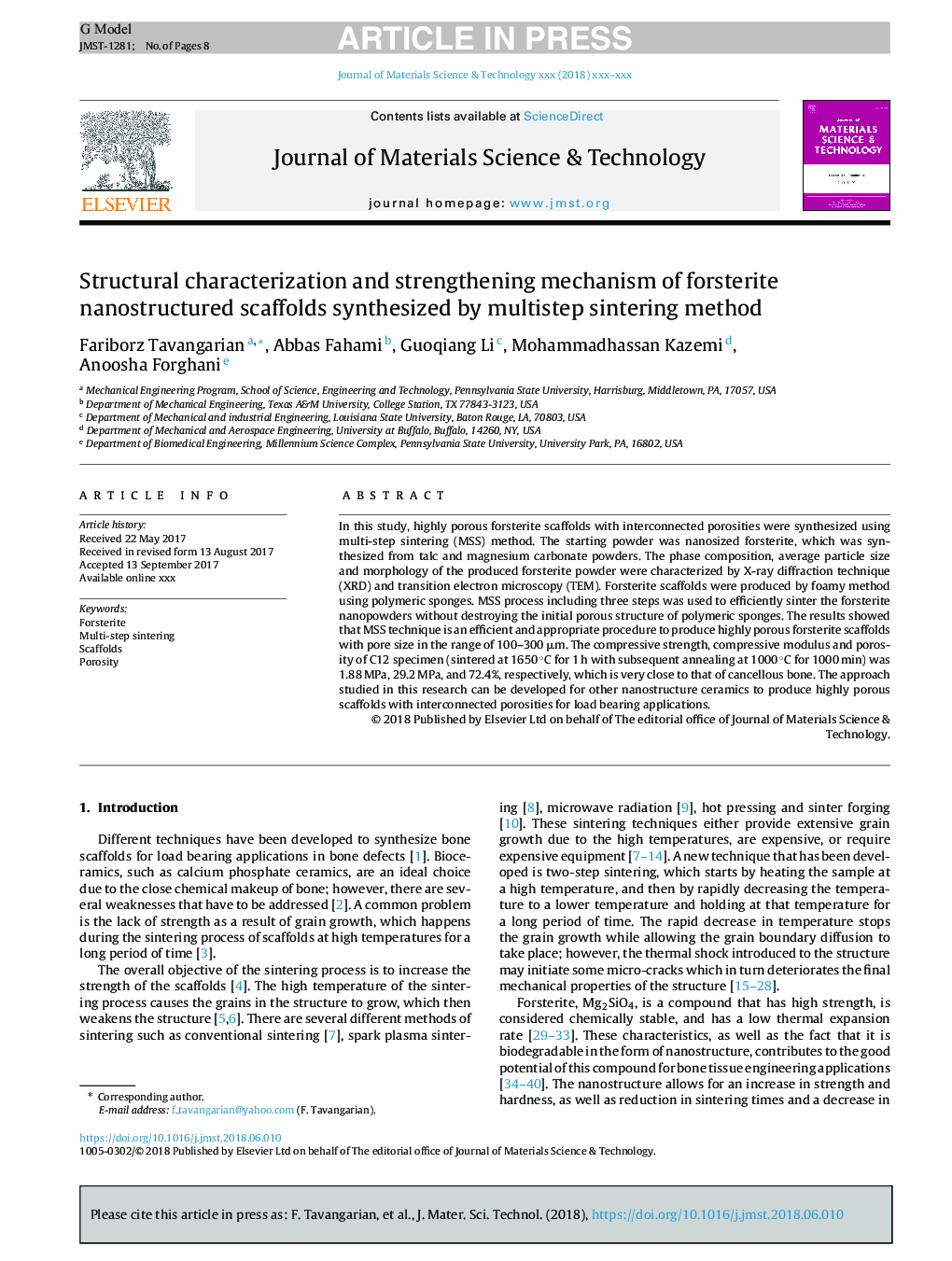| Article ID | Journal | Published Year | Pages | File Type |
|---|---|---|---|---|
| 8955392 | Journal of Materials Science & Technology | 2018 | 8 Pages |
Abstract
In this study, highly porous forsterite scaffolds with interconnected porosities were synthesized using multi-step sintering (MSS) method. The starting powder was nanosized forsterite, which was synthesized from talc and magnesium carbonate powders. The phase composition, average particle size and morphology of the produced forsterite powder were characterized by X-ray diffraction technique (XRD) and transition electron microscopy (TEM). Forsterite scaffolds were produced by foamy method using polymeric sponges. MSS process including three steps was used to efficiently sinter the forsterite nanopowders without destroying the initial porous structure of polymeric sponges. The results showed that MSS technique is an efficient and appropriate procedure to produce highly porous forsterite scaffolds with pore size in the range of 100-300â¯Î¼m. The compressive strength, compressive modulus and porosity of C12 specimen (sintered at 1650â¯Â°C for 1â¯h with subsequent annealing at 1000â¯Â°C for 1000â¯min) was 1.88â¯MPa, 29.2â¯MPa, and 72.4%, respectively, which is very close to that of cancellous bone. The approach studied in this research can be developed for other nanostructure ceramics to produce highly porous scaffolds with interconnected porosities for load bearing applications.
Keywords
Related Topics
Physical Sciences and Engineering
Materials Science
Materials Chemistry
Authors
Fariborz Tavangarian, Abbas Fahami, Guoqiang Li, Mohammadhassan Kazemi, Anoosha Forghani,
